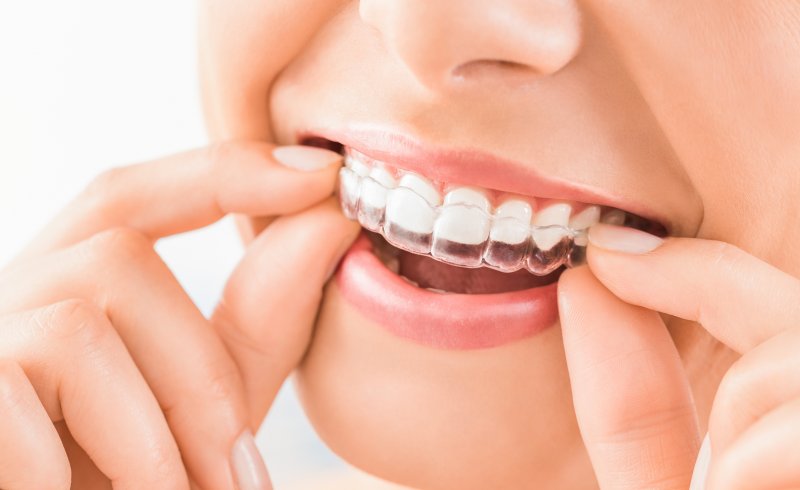
Invisalign is considered one of the greatest alternatives to traditional metal braces. Clear, flexible, and capable of helping patients achieve faster results (on average), these aligners can address all types of teeth and bite misalignment, but are they a risk-free option? Should you be concerned about complications while undergoing treatment? Discover the truth about Invisalign and why the benefits far outweigh any possible risks.
Are There Complications Associated with Invisalign?
As with any type of dental treatment, there is always some level of risk involved, even if it’s minor. Invisalign is no different, especially if a dentist does not properly examine your mouth beforehand.
Some of the common issues that can occur while undergoing Invisalign treatment include:
- Discomfort that occurs as your teeth shift closer to their desired destination
- A filling becomes dislodged because you bite down while wearing your aligners
- Temporomandibular joint (TMJ) pain can occur as teeth shift over time
- Poor oral health, like gum disease, cavities, or tooth decay, can develop if you do not clean your teeth and gums or aligners regularly
- Oral sores that form when aligners irritate your cheeks or gums
Many of these situations are rare; however, they are possible. If one or more of these problems arise, make sure that you reach out to your dentist to inquire about ways to combat the issue(s).
Why is an Initial Consultation Important?
Before you begin Invisalign treatment, it is essential that you meet with your dentist for an initial consultation. This visit determines whether you are in the right position to receive orthodontic treatment with the help of clear aligners.
Your dentist will examine your oral health and recommend preliminary treatment if signs of decay, disease, infection, or damage exist. They will also decide if the problem you’re experiencing can be fixed using Invisalign aligners. Fortunately, this clear aligner system has improved over time to successfully address complex dental issues.
After evaluating your oral health and discussing the responsibility that is required to pursue Invisalign, they will either clear you to start treatment or recommend an alternative, like traditional braces.
This careful review early on in the process is likely to set you up for greater success with Invisalign.
By taking the appropriate step to meet with your dentist from the start, you can be sure that your decision to choose clear aligners to straighten your smile is the right one.
About the Author
Dr. Rachel Beamer is a dentist in Boston who brings a high level of experience and knowledge to the team. After earning her dental doctorate from East Carolina University School of Dental Medicine, she completed various research projects and obtained advanced training in the field. At Turning Leaf Dental, she works closely with patients who desire straighter teeth, which is why we offer Invisalign. She will ensure you are a good candidate before getting started, so if you’re interested in doing something about your misaligned smile, call us at (617) 536-5182 or visit our website.
